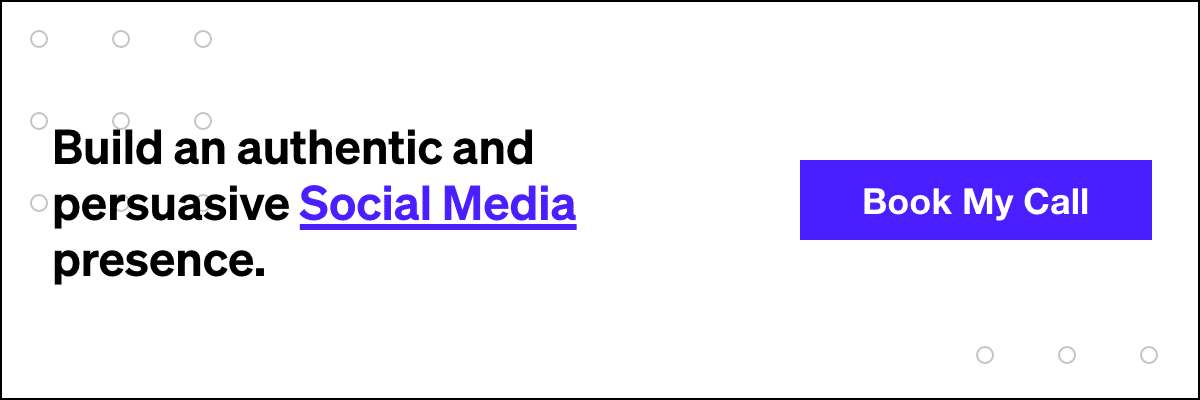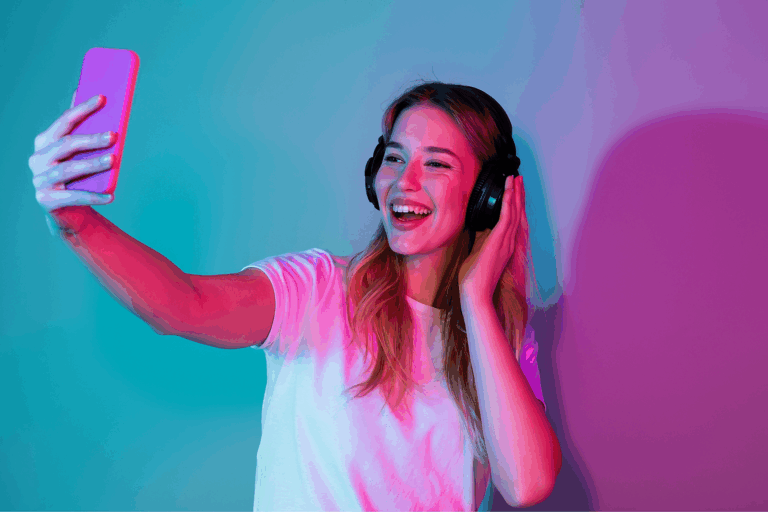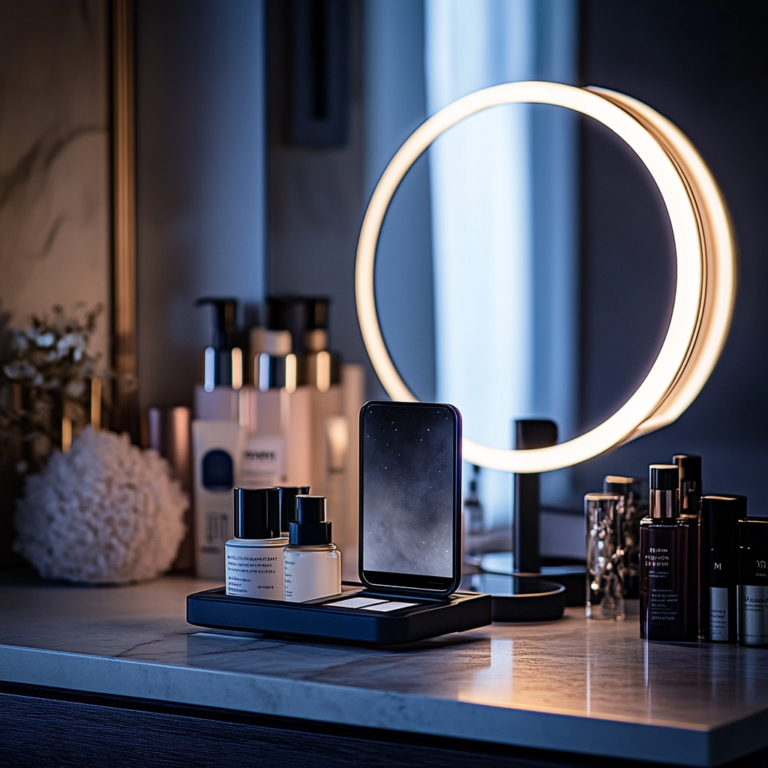Retail and TikTok: How to lift sales with a robust TikTok strategy

As the latest frontier in the landscape of social commerce, TikTok represents one of the most dynamic venues for building brand awareness and inviting new customers into the fold.1 In an era when brand visibility is as important as driving revenue, companies of every size, industry and identity have something to gain from dipping an oar into this social media app’s waters.
But for retail companies, there’s just one question: When you’re in the business of selling physical goods, how might one leverage digital experiences to add value to both customers’ lives and their bottom line? Marketing ROI is hard enough to track as-is—is turning content for ‘Tok really worth it when driving sales?
Let’s find out.
TikTok and shopping: the stats
Here’s the rub: In today’s inescapably digital landscape, even traditionally brick-and-mortar companies are inherently hybrid.
Back in 2017, Harvard Business School reported that 73% of customer journeys sprawl over multiple channels on the road to make a purchase. Moreover, these omnichannel customers stand to gain brands even more conversion opportunities—their study found that people who used four or more channels for a company spent 9% on in-brand purchases.2
So, why should TikTok be one of the forerunning platforms for retail brands? Even a cursory glance at the stats speaks volumes:
- In Gen Z alone, 97% of consumers report using social media to dictate purchases.3
- TikTok reports that 91% of its users act after seeing a video posted on the platform.4
- A full ¼ of TikTok users research a product or service after seeing an ad for it on the app.4
Whether retail companies want to reach more potential customers, bring their brand to a new audience segment, or bolster their brass-tacks goal of generating revenue, embracing TikTok isn’t just any retail strategy.
It could be one of the most decisive.
5 tips for leveraging TikTok as a brick-and-mortar brand
Some companies could feel shy about entering the TikTok platform. In the wake of such a voluminous and rapid user base growth, they may suspect that the space is already saturated and their marketing dollars may be better spent elsewhere.
But compared with its social media predecessors, TikTok is not a popularity contest. While brands with high follower tallies may rule the roost on apps like Instagram, TikTok feeds are mainly sculpted by user interests and trending topics.5
Put simply? If they master the technical side of TikTok and tailor content toward what their target audience genuinely wants to see, even the smallest up-and-comers can get discovered (and followed) alongside the biggest league brand names out there.
#1 Flesh out the target user
Creating user or customer personas is a tool that was developed in the UX design world. Organizations use these to imagine who their target consumer is, what they value and what motivates their behavior (online and IRL).6
To appease a user intent-driven algorithm like TikTok’s, getting a feel for the nuances of an audience demographic is crucial. Retailers can kick off the process by determining user traits like:7
- Age group.
- Socioeconomic bracket.
- Pop cultural interests.
- Key problems or challenges.
- Key goals and values.
- What they come to use TikTok for.
Once they’ve established who their prototype customers are, it also behooves retailers to sketch out their buyer’s journey. By mapping users’ in-store, in-app and on-web browser experience, they can create a retail marketing strategy that delivers value to users at the most critical touchpoints in their journeys.
#2 Tap into TikTok’s built-in resources
TikTok boasts a robust suite of services designed to make businesses of all stripes drive visibility, engagement and sales. These are designed to make the user experience feel more organic, all while championing retailers’ unique KPIs.
Some resources to explore include:
- Shopping Ads – A tri-part solution for e-commerce businesses, shopping ads were created to help retailers cater to their target audience no matter where they are in their buying journey. There are three types of Shopping Ads:8
- Live Shopping Ads, which let viewers make spur-of-the-moment purchases while watching relevant content.
- Video Shopping Ads, which spotlight relevant branded content in the For You page and can seamlessly take viewers to a transaction.
- Catalog Listing Ads, which users visit expressly to shop; here, products live alongside other competing brands’ products (like a digital storefront).
- The Creative Center – In this hub, retailers can see the hottest and most current hashtags, songs and other content trends in the app. They’ll also get to peruse retail TikTok’s generated trend reports, which predict what kinds of content online audiences will be craving next.
- Spark Ads – TikTok’s Spark Ads save retailers the work of creating totally new content. This is a huge boon for smaller retailers, who might not have a big enough budget to accommodate the frequent, consistent output that is encouraged by TikTok creators.
Instead, Spark Ads uses existing organic content and re-presents them to users who may be interested in the form of paid ads.
Finally, no retail brand should go without taking the viral #tiktokmademebuyit hashtag for a spin. This hashtag is so high-performing that its netted views are constantly climbing—the most recent data shows the tag has nearly 8.5 billion views.9
#3 Appeal to key TikTok audiences with flexible payment plans
In addition to leveraging TikTok’s seamless shopping capabilities, you may likewise consider lifting other possible barriers to conversion—namely, financial ones.
According to new data, BNPL (buy now, pay later) payment options are a favored payment method for TikTok’s two most robust demographics: gen Z and millennials.10 These segments tend to view payment by installment as more manageable than one sizable purchase.10
For newer retailers that are just beginning to build credibility for their products or services and overall brand, flexible payment options serve to stand by the value of their product while ensuring it’s attainable for shoppers of multiple earning brackets.
#4 Experiment by cross-categorizing content
In the earlier days of TikTok, grittier, less curated content reigned supreme. Users prized the app for its rough-around-the-edges feel—a stark contrast from the ultra-filtered, framed and finessed photos patent to Instagram.3
But in just three years, TikTok has spawned a nuanced array of content categories to meet a wide (and sometimes bizarre) range of user interests. As of this writing, some of the most popular content categories include:11
- Entertainment.
- Dance.
- Pranks and hijinks.
- Sports and fitness.
- DIY and home renovation.
- Skincare, beauty and makeup.
- Fashion and style.
- Food, recipes, cooking and baking.
- Life hacks.
- Animals and pets.
- Outdoor adventures.
For retailers, the most obvious approach might be to gear their content and complementary hashtags towards trends squarely in their product category.
However, in other cases, it may be advantageous to resist cookie-cutter conventions altogether and try ingressing into content categories that aren’t as obviously relevant to the product at hand—but still provide ample entertainment value to viewers. After all, if there’s any social media app where content categorization is encouraged, it’s TikTok.
By way of example, take the imaginary outdoor gear retailer OnBelay. Rather than outfitting their content strictly for the outdoor adventure category, they might experiment with a campaign that falls into the pranks and humor wheelhouse.
Remember, individual consumers possess a variety of interests. On TikTok, retailers have the opportunity to cater to multiple audiences.
#5 Take advantage of niche partnerships
On the social media platforms of yore, brands that lacked a household name or enormous following behind them often fell out of customers’ horizon of awareness. But on TikTok, nano and micro influencers have user engagement rates that surpass their “macro” peers sevenfold.12
What’s more, 87% of consumers report buying a product because they saw it featured in a favorite influencer’s content.12
Ultimately, this is the key for retail companies looking to devise a buzz-worthy TikTok strategy no matter their size or product: authenticity. Whether that genuineness is built through retail partnerships with trustworthy ambassadors or by creating ultra-relatable content, TikTok offers an unprecedented pathway for nurturing real relationships with consumers beyond the IRL.
Drive revenue, relationships and relatability on TikTok with PDM
Despite trending towards business-friendliness, TikTok admittedly comes with its fair share of bells and whistles that can make it an intimidating tool for retailers to use. When you partner with a TikTok agency like Power Digital, you’ll save yourself the work that keeps businesses from reaping the major benefits to be gained from the app.
From optimizing TikTok’s shoppable capabilities to locating the perfect brand ambassadors that’ll get your brand message out to audiences, our digital marketing agency’s experience and advanced data analytics can help you ensure your initiatives surpass your goals for marketing ROI.
For more on what we offer retail businesses like yours, reach out for a consultation today.
Sources:
- Investopedia. Social Commerce: Definition, Tactics, and Examples.https://www.investopedia.com/terms/s/social-commerce.asp
- Harvard Business Review. A Study of 46,000 Shoppers Shows That Omnichannel Retailing Works. https://hbr.org/2017/01/a-study-of-46000-shoppers-shows-that-omnichannel-retailing-works
- Forbes. Gen Z And The Rise Of Social Commerce. https://www.forbes.com/sites/forbesagencycouncil/2021/05/17/gen-z-and-the-rise-of-social-commerce/?sh=2f159aa3251
- TikTok. The Marketer’s Guide to TikTok. https://indd.adobe.com/view/acbc776f-341e-4501-9b15-bdfc15d7c6df
- Forbes. Gaining ROI With Influencers On TikTok. https://www.forbes.com/sites/forbesagencycouncil/2021/05/28/gaining-roi-with-influencers-on-tiktok/?sh=1f68f6ee7a22
- Adobe. Putting Personas to Work in UX Design: What They Are and Why They’re Important. https://xd.adobe.com/ideas/process/user-research/putting-personas-to-work-in-ux-design/
- Usability.gov. Personas. https://www.usability.gov/how-to-and-tools/methods/personas.html
- TikTok for Business. Presenting the Future of Commerce on TikTok. https://www.tiktok.com/business/en/blog/ecommerce-ad-formats-convert-viewers-shoppers/
- Psychology Today. Why TikTok Made Us Buy It.https://www.psychologytoday.com/gb/blog/the-savvy-consumer/202201/why-tiktok-made-us-buy-it
- CNBC. Why millennials and gen-Zs are jumping on the buy now, pay later trend. https://www.cnbc.com/2021/08/07/why-millennials-and-gen-zs-are-jumping-on-the-buy-now-pay-later-trend.html
- Influencer Marketing Hub. Top 64 TikTok Stats You Need to Know in 2023. https://influencermarketinghub.com/tiktok-stats/
- Business 2 Community. Influencer Marketing: 2020 Trends & Stats. https://www.business2community.com/marketing/influencer-marketing-2020-trends-stats-02279198
Our Editorial Standards
Reviewed for Accuracy
Every piece is fact-checked for precision.
Up-to-Date Research
We reflect the latest trends and insights.
Credible References
Backed by trusted industry sources.
Actionable & Insight-Driven
Strategic takeaways for real results.











